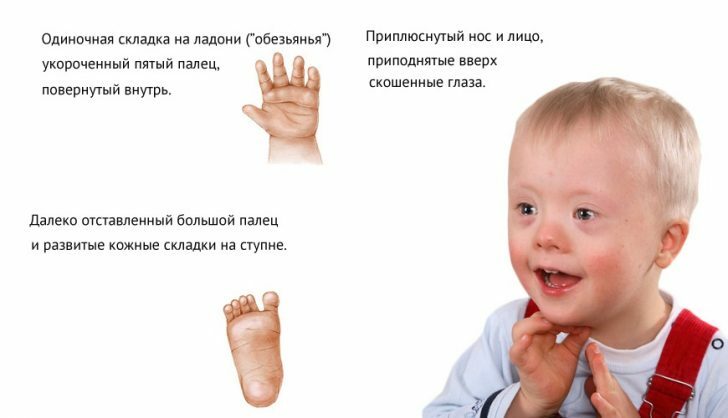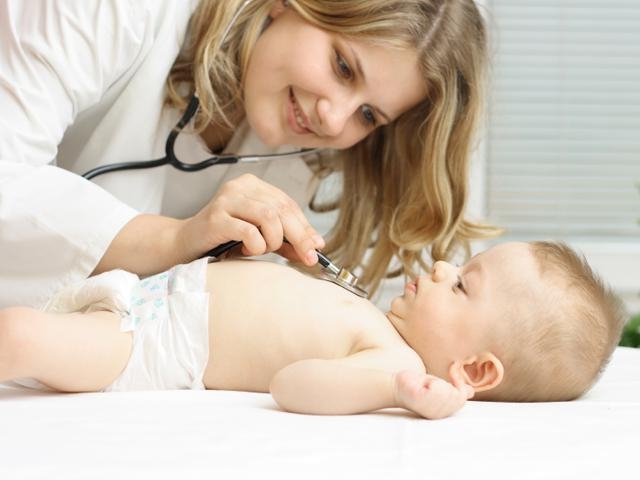Rickets in infants

Rickets is a disease in which growth disorders and bone formation occur due to poor mineralization, in particular calcium and vitamin D. In the last stages of rickets in children, the bones can not support the weight of the body and begin to bend. This disease is inherent in early, as well as infants.
Stages of manifestation of rickets
The first stage. There are no obvious manifestations of rickets at this stage, because it is easy, but changes in the muscular and nervous system are possible.
The second stage. At this stage, minor increases in internal organs, such as the liver and spleen, as well as various abnormalities in the functioning of internal organs can be observed. In addition, there are visible changes in the muscular, hematopoietic, nervous and bone systems.
Third stage. This stage is considered to be the heaviest. There are serious violations in the functioning of the bone, muscle and central nervous system. At this stage, it can be seen that the child has a strong change in the appearance of the extremities.
Consequences of rickets
Rickets in infants should be detected at the earliest stage so that rapid treatment can begin. Particular attention should be paid to children who begin to crawl too late, sit, stand on legs or simply turn over. Also it is necessary to follow those children, in which the tummy begins to grow, there are bouts of diarrhea or constipation. When rickets appear, as well as its development, the following changes in the child's body can occur:
- Bones on the occiput, as well as in the parietal region soften, and the occiput becomes flat.
- The forehead changes. It becomes convex. You can distinguish frontal and parietal mounds.
- The big fontanel is late with closing.
- Possible scalp increase in volume.
- There is a visible change in the bone system.
- The chest looks as if it was squeezed from both sides.
- With the rapid development of rickets in the period of about 9 months, you can find a change in the ribs. They become thicker in the sternum.
- With the development of rickets in a period of 12 months in a baby who is just beginning to walk under the influence of his weight, the appearance of the legs changes: they curl and form an "o" or "x" shaped position.
Unfortunately, rickets are most often found in the late stages, when the disease develops intensively and it is difficult to treat it. This all is fraught with the early appearance of scoliosis, abnormalities in the structure of the pelvic bones, and this is very dangerous for women, because in that case future birth will occur with complication. Also, with rickets, there are clinical changes in blood tests, in particular, anemia appears as a result of lowering hemoglobin levels.
Signs of rickets
The most common disease occurs in infants during the winter and autumn seasons when there is no sun, which helps to synthesize vitamin D. It is in turn closely associated with calcium and helps it to be actively absorbed by the body. The first signs of the appearance of rickets in children are their moody mood, lethargy, sweating during feeding, sweating hands, the appearance of bald patches on the back of the head. To diagnose rickets, it is best to conduct an early biochemical examination that will help determine the amount of vitamin D and calcium in the body.
Prevention of rickets
Rickets can not only be treated, it can be prevented and prevented from developing. And it's quite easy to do this. It is only necessary to take out the child more often in the sun, as well as give drugs that contain vitamin D in pure or combined form. As for walks - walk in the morning, when the sun is not hidden by clouds, at least 30 minutes a day. But about the drugs you need to see a doctor who can prescribe the type of drug you need, specify the dosage and duration of treatment that you need. It is impossible to be treated independently with preparations with vitamin D, because they have the property of accumulating in the body and causing it to be poisoned.
The first signs of poisoning are dry mouth, severe vomiting and thirst, a sharp weight loss, in rare cases, the appearance of seizures.



